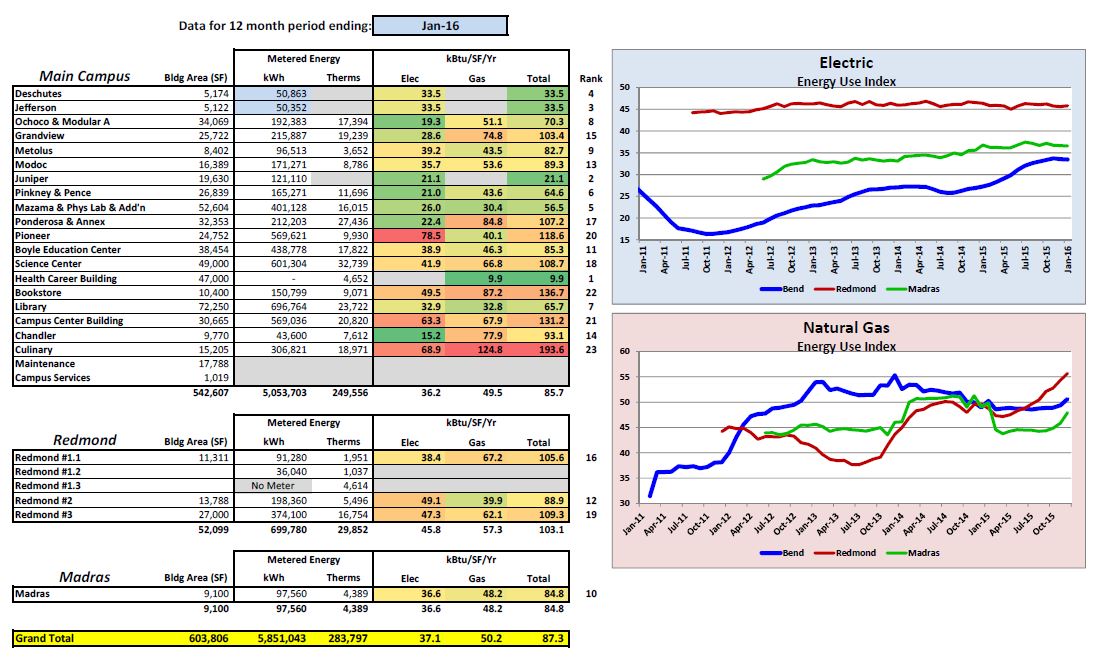Metrics and Data
COCC - Energy Audit Program
This energy audit displays the energy (electric and natural gas) being consumed by each building on COCCs Bend campus each month. The audit provides feedback on how each building is performing and serves as an reference point to allow students and employees to engage in collaborative efforts to save energy and reduce carbon emissions through conscious energy use, efficiency best practices and energy conversation contests.
Utility Analysis Report - February 2016

Energy Saving Ideas
Turning Things Off
- Office Equipment. Turn off computers, monitors, and printers when not in use or at the very least establish the low-power sleep settings on these devices.
- Power Strips. Use smart power strips with built-in occupancy sensors to shut off plugged-in devices like printers and monitors when no users are present.
- Lights. Turn off lights when they are not in use. Install occupancy sensors or recruit energy monitors in each campus building to ensure that switches are off when the lights are not needed. Train custodial staff to do the same.
- Laboratory Vent Hoods. Vent hoods are energy-intensive and should be turned off except when they are in use for experiments or material storage purposes.
- Water Fountains. Water fountains do not really need to provide ice-cold water 24 hours a day unless it is required for health reasons. In most cases, you can turn off the cooling systems for drinking fountains.
Office Turning Things Down
- Computer Monitors. Turn down the brightness of your screen.
- Water Heaters. Reduce water heater temperature (consistent with health requirements) in buildings that do not have shower, laboratory, or cooking facilities. You may find that the water temperature is set higher than necessary for residential buildings.
- Building Management Systems. Make sure setbacks are coordinated with building occupancycampus staff should schedule occupancy to optimize efficient energy usage. Check that HVAC systems are not set to overcool or overheat buildings. Identify buildings that are not used at night, because after-hour temperature settings in these locations can be adjusted for cost savings.
- Vending Misers. Vending misers allow vending machines to turn machine lights off and cycle machines when not in use while still keeping beverages cold.
- University Heating /Cooling Policy. Adopt a heating policy that calls for the colleges facilities to be heated to lower temperatures during normal occupied hours and during off-hours. It is suggested to set the thermostat in winter to 68 degrees or less during the daytime, and 55 degrees before going to sleep (or when you are away for the day). During the summer, set thermostats to 78 degrees or more.
Energy-Saving Behavior
The University of Canterbury, New Zealand, installed a peak load warning system consisting of orange lamps in every building. The lights flash when the university reaches or exceeds a preset demand level, notifying building occupants to turn off lights and equipment they are not using at that time. This $3,500 system reached payback in just two months and saves the university about $21,000 per year in capacity and demand charges.
